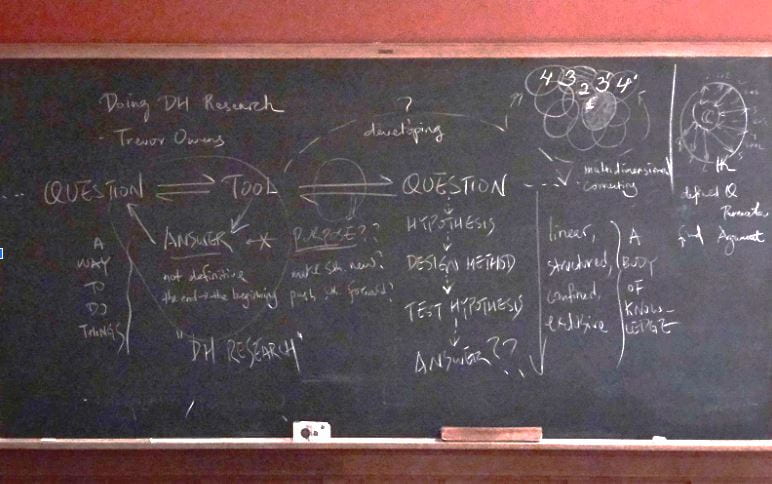What is research? Perhaps defining research reflects a larger sense of conceiving of progress, especially epistemic progress in academia. When we invent a novel concept to explain the unexplained or conduct an experiment to show the unshown, we consider them as progress. But progress in humanities, according to Trevor Owens, isn’t necessarily about delivering the final product. In a lot of cases, it is centered on the unfinished or unexplained. When we explore different narratives relying on evolving digital tools, we are almost certainly bound to evolving answers that don’t lead to the same destination. But it is in the different destinations that spur more exciting discoveries from the origin.
Trevor Owens’ framework of research is different from that in the introductory science classes. In science, we start with a question and end with an answer. It is linearly structured, which makes it easier to conduct a hypothesis. However, it is almost certainly exclusive, susceptible to a confined parameter. While the structure is certainly operationalized in most social sciences, even, it assumes that the body of knowledge is a finite circle. Individual scientists conduct researches to push the edge of our known to the unknown, a linear expansion or push known within to find unknown, a linear collapse. This model assumes that there is an objective truth, and the only way we get close to it is by approaching it with refined tools and parameters, so as to construct a valid argument.
Perhaps the biggest challenge I have in the research process is to accept the final project being a product of a question left unanswered. In DH, for a lot of times, we start with an answer and end with a question. We assume the knowledge is about making intersectional connections. We further assume that we cannot fully remove our bias or ignorance from the analysis or visualization so that every time we take primary sources beyond its scope of influence we are making an intervention. Every intervention has a cost and an award.

Take “Amherst in Disasters”, a topic to practice in the research workshop, for example. The first question we have (as the starting point of our research) is: what counts as a disaster? We use several keywords such as “disaster*” and “catastrophe” to run down the archive database, and find numerous pieces of publications that contain relevant information. However, further segmentation surfaces in the initial keywords “disaster”– disasters are of different causes (natural and societal) and will yield different outcomes. Therefore, a follow-up question can be like: what are the ways to categorize disaster? How would the student cope with different types of disasters? Consequently, if we notice the contributors of various primary sources, we may observe a pronounced correlation between the type of disaster and the source of the contributor. Our updated question, correspondingly, would be: why would contributors differ on labeling types of disasters differently? Could their perception of disasters provide additional insight into their status in society and in relation to the college? Furthermore, would their unique perception result in a distinct approach to mitigate the disaster’s impact on their lives?
Another debate in Trevor Owen’s article centers around using tools to find questions, which also seems counter-intuitive for hypothesis-driven research paradigm. Just as a question is meaningful in its making, a tool is useful in its development. If we apply topic modeling tools to a dataset, we pay attention to the correlation between keywords, which then shapes our understanding of the dataset’s implications. Conversely, if we run a keyword network on gephi, we may modify our question into one that fits the narrative of network effects, not simply correlations. While we can not remove the limitations or biases of using each tool, we can acknowledge our presumptions and move forward with a question to address them.
Combined with last week’s reading on digital humanities’ purpose, a digital humanist researcher would not stay content with an answer that is already provided and promulgated by the system. With new collections being introduced, new methods invented, or new paradigms shifted, the necessities for “finding an answer” are disruption, interrogation, and reconstruction of narratives. And the first step to find the answer is to question it.
